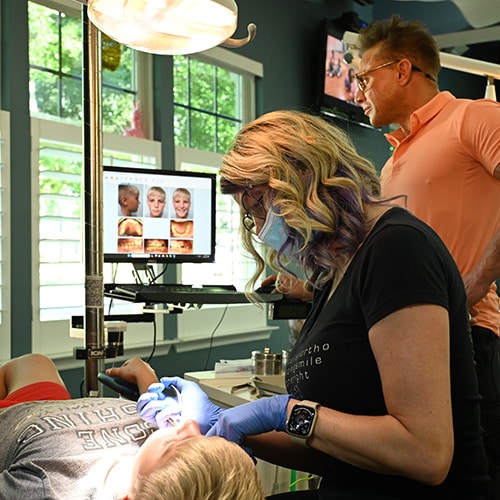Brushing and Flossing with Braces
Maintaining excellent oral hygiene is crucial when you have braces. Brushing and flossing become more challenging, so it’s essential to adjust your habits to ensure your teeth and gums stay healthy. Regular brushing and flossing will help prevent issues such as cavities and gum disease. Adults with a history of gum problems should also consider consulting a periodontist during orthodontic treatment.
Watch the two helpful videos below for detailed instructions on caring for your braces effectively.
Eating with Braces
One common question is, “What can I eat with braces?” Here’s a guide to help you navigate your diet:
- Soft Foods: For the first few days after an adjustment, stick to softer options like yogurt, mashed potatoes, and scrambled eggs.
- Avoid Tough or Hard Foods: Initially, avoid tough meats, crusty breads, and raw vegetables. Gradually reintroduce these foods as your mouth adjusts.
To protect your orthodontic appliances, keep the following tips in mind:
- Chewy Items: Avoid bagels, hard rolls, and licorice.
- Crunchy Snacks: Refrain from eating popcorn and ice.
- Sticky Treats: Stay away from caramels and gum.
- Hard Foods: Nuts, candy, and similarly hard foods should be avoided.
- Foods Requiring Biting Into: Skip corn on the cob, apples, and raw carrots until your braces are fully adjusted.
Additionally, avoid chewing on non-food items like pens or pencils, as this can damage your braces and potentially extend your treatment time.
Handling Loose Wires or Bands
If you encounter a loose wire or band, follow these steps:
- Irritation: If a wire causes discomfort, use the eraser end of a pencil to push it back into place gently. Only do this if orthodontic wax does not provide relief.
- Cover the Wire: Apply additional wax or a wet cotton ball to reduce irritation if needed.
Be sure to contact us as soon as possible to schedule a repair appointment.
Understanding Loose Teeth
During orthodontic treatment, it’s normal for teeth to feel a bit loose. This is a sign that they are moving into their corrected positions. Although it might be unsettling, this process is necessary for achieving the desired alignment. Your teeth will become firm in their new positions once treatment is complete.
Managing General Soreness
Experiencing some soreness when you first get braces is normal. Here’s how to manage it:
- Soreness in Teeth: Expect tenderness when chewing for the first 3–5 days. Over-the-counter pain relievers, such as Tylenol, can help.
- Irritation in Mouth: Your lips, cheeks, and tongue may feel irritated as they adjust to the braces. We will provide orthodontic wax to soothe these areas.
Rubber Band Wear
For your orthodontic treatment to be effective, it’s important to follow these guidelines:
- Consistency: Wear rubber bands and other prescribed appliances consistently to ensure your teeth and jaws move as planned.
- Compliance: Adhering to instructions is crucial for avoiding delays in your treatment.
Remember, your estimated time in treatment takes into consideration your excellent cooperation with elastics.
Protecting Your Smile During Sports
If you participate in contact sports, it’s important to inform us so we can consider whether you require an actual custom mouthguard or if a “Doctor Shock“ guard will be effective. This protective gear helps shield your braces and teeth from potential injuries.
Even if you’re not involved in contact sports, a mouthguard can still be beneficial for activities that put your braces at risk. Remember, keeping your braces safe is key to ensuring your treatment progresses smoothly.

